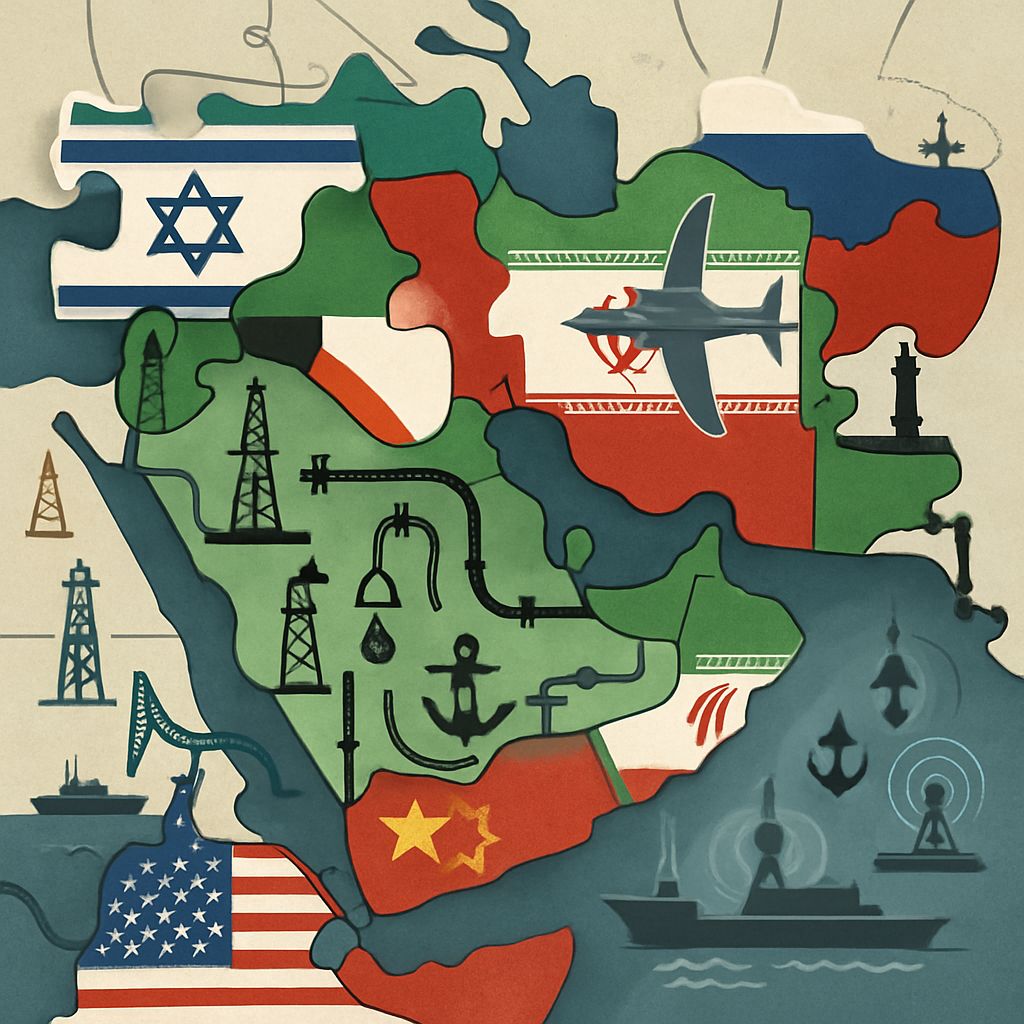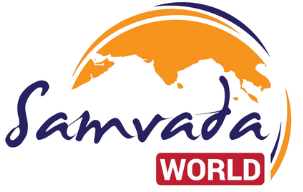
- West Asia has shifted from rigid blocs to flexible, modular arrangements, shaped by the Abraham Accords, Saudi–Iran rapprochement and GCC reconciliation, though crises like Gaza continue to test their durability.
- U.S. security guarantees remain indispensable, but China’s mediation and Russia’s energy-security role are reshaping regional multipolarity and offering Gulf states more hedging options.
- OPEC+ tensions reveal divergent Saudi–Russian agendas, while Gulf sovereign wealth funds and new connectivity projects like IMEC and Turkey’s Iraq Development Road highlight the use of economics as a strategy.
- Integrated air and missile defence frameworks, Red Sea maritime coalitions, and crisis-management mechanisms illustrate how the region is shifting toward task-specific, adaptive security networks.
The West Asia alliance map has never been fixed, but the past half-decade has witnessed especially swift changes. Israel’s 2020 Abraham Accords with various Arab countries, the 2021 Al-Ula reconciliation that closed the Gulf rift and the 2023 Saudi–Iran rapprochement brokered by China broke decades-old hostile trajectories. On the other hand, the Gaza war that began in October 2023 and increasing U.S.-China competition continue to influence regional politics. The region is now more about loose, multilayered structures in security, economics and energy rather than old-fashioned blocs. Peering ahead into 2025, emerging great-power politics, energy politics, and crisis management frameworks are staging a reconfigured West Asia.
The Abraham Accords: Limited but Lasting Impact
Cooperation between Israel and Gulf states, including the United Arab Emirates, Bahrain and Morocco (with Sudan announcing normalisation in 2020 but not fully implementing it amid political turmoil), was formalised by the Abraham Accords. They decoupled normalisation from the Palestinian issue to some extent while expanding trade, investment and security channels. However, as public opinion severely restrained Arab governments, the Gaza war of 2023–2024 revealed the boundaries of normalisation. The Accords did not establish a stable security order, but they did provide instruments for interest-based cooperation. They continue to be a framework for targeted interaction rather than an all-encompassing partnership.
Saudi–Israeli Normalization and U.S.–Saudi Security Talks
Following the Accords, Washington viewed a Saudi–Israeli agreement as the next logical step. By 2024, a draft U.S.–Saudi framework envisioned civil nuclear cooperation and expanded defence ties. Riyadh, however, concluded that without tangible progress on the Palestinian front, the political costs outweighed the benefits. Instead, it adopted a calibrated hedging strategy, investing in defence industrialisation, expanding partnerships with China and Russia, while simultaneously reinforcing its security relationship with the United States. Normalisation with Israel remains a strategic objective, but for now, Saudi policy is defined by deliberate balance.
Saudi–Iran Rapprochement and China’s Role
By reopening embassies and direct channels, the 2023 agreement between Saudi Arabia and Iran, mediated by China, reduced the likelihood of escalation. It institutionalised crisis management, but it hasn’t resolved proxy conflicts. China’s involvement demonstrated its increasing economic and diplomatic influence, while Moscow’s strengthening defence and energy ties with Tehran and its Gulf allies strengthened multipolarity. By 2025, Sino-Russian collaboration is changing the strategic balance in West Asia by offering alternatives to a security order centred on the United States, from arms sales to digital infrastructure.
The U.S. Intervention in the Red Sea Crisis
Since late 2023, Houthi attacks in the Red Sea and Gulf of Aden have threatened global trade. In response, the United States launched Operation Prosperity Guardian in December 2023, which continued into 2025. Although Gulf states preferred limited participation, the operation underscored Washington’s central role in regional security. The episode highlighted a new West Asian security model, task-specific coalitions replacing rigid blocs, even as Gulf states diversified ties with China and Russia. U.S. involvement, however, revived debates over regional dependence on American power.
OPEC+Tensions and Gulf Sovereign Wealth Strategies
The geopolitics of West Asia continue to revolve around energy. In the midst of a global slowdown, tensions over production quotas have plagued OPEC+ coordination, especially between Saudi Arabia and Russia. Moscow’s desire for increased output to finance its war in Ukraine frequently conflicted with Riyadh’s cuts to stabilise oil prices. In addition to exposing conflicting agendas within OPEC+, these disputes demonstrated the resilience of the Gulf, as sovereign wealth funds in Saudi Arabia, the United Arab Emirates, and Qatar are making significant global investments in technology, green energy, and logistics. This change reflects a long-term plan to use leverage capital as a geopolitical influence and protect against oil volatility.
Integrated Air and Missile Defence: From Concept to Reality
The operational value of integrated defence was exemplified by the Iranian drone and missile attack on Israel in April 2024. Roughly 99% of projectiles were intercepted through coordination among Israel and allies, including the United States, the United Kingdom, France, and Jordan. This demonstrated latent architectures, sensor fusion, joint exercises and layered defence that can be triggered in emergencies, despite the fact that it is politically sensitive. Building these modular frameworks is still a top priority in 2025, with Gulf states requesting flexibility and local capacity-building while Washington serves as the systems’ anchor.
Intra-Arab Reset and Turkey’s Balancing Act
Syria’s May 2023 readmission into the Arab League highlighted a practical regional trend: engage enemies rather than isolate them, while the Al-Ula reconciliation brought the GCC back together. Although Gaza forced Ankara to change course, Turkey also sought rapprochement with Israel and the Gulf states. Turkey leverages corridor competition and investment needs to sustain transactional ties with Saudi Arabia and the United Arab Emirates by 2025. Arab nations, on the other hand, show their increasing independence from American inclinations by engaging Syria despite Western protests.
Economic Corridors and Competition
The region’s new architecture is visible in minilateral economic initiatives such as the India–Middle East–Europe Economic Corridor (IMEC), the East Mediterranean Gas Forum, and I2U2 (India, Israel, UAE, and the U.S.). Launched at the G20 in September 2023, IMEC seeks to link India to Europe through the Gulf, though conflicts in Gaza and the Red Sea quickly tested its viability. Turkey’s promotion of the Iraq Development Road highlights the competitive nature of corridor politics. With connectivity projects now serving as both economic strategy and geopolitical instruments, these initiatives mark a clear shift in regional dynamics.
Constraints and Friction Points
Regional architectures are still brittle in spite of innovation. Normalisation is hampered by public outrage over Gaza. Escalation is still a threat from Iran’s proxies. Palestinian statehood is hampered by Israeli politics. Great-power competition also heats up: while the U.S. presence remains crucial, Gulf states are increasingly taking advantage of China’s mediation and Russia’s energy-security role. Coherent security planning is made more difficult by this competition, which also strengthens West Asian hedging.
Outlook to 2025 and Beyond
It is best to think of the West Asian alliances in 2025 as functional, hedged and modular adaptive networks. The baseline scenario is managed fragmentation, which includes gradual advancements on corridors, evolving U.S.-Saudi defence arrangements, and quiet Israel-Gulf cooperation. If Gaza stabilises, a conditional breakthrough could occur, paving the way for deeper U.S. defence commitments and normalisation between Saudi Arabia and Israel. On the other hand, escalation due to Iran’s nuclear program, Hezbollah or disruptions in the Red Sea could lead to a crisis reversal. Which scenario wins will be largely determined by the great-power competition-Washington’s interventions, Beijing’s mediation and Moscow’s energy-security activism.
In West Asia, bloc politics is giving way to overlapping, task-specific agreements. These include integrated air defence, energy deals, investment platforms, and maritime patrols. Some of these frameworks were introduced through the Abraham Accords, while others emerged from the GCC reconciliation and the Saudi–Iran de-escalation. Their resilience was tested during the Red Sea crisis, showing both strengths and limits. The real challenge is whether these adaptable structures can endure shocks from Iran, the Gaza conflict, or intensifying great-power competition. By 2025, the region is marked by a constant mix of collaboration, rivalry and crisis management, a flexible architecture, yet far from unbreakable.
Daljeet Singh holds a BTech in Computer Science and is currently pursuing an MA in Political Science. His interests range across geopolitics, international relations, and technology. An avid reader and writer, he is passionate about exploring the intersections of these fields. Views expressed are the author’s own.
